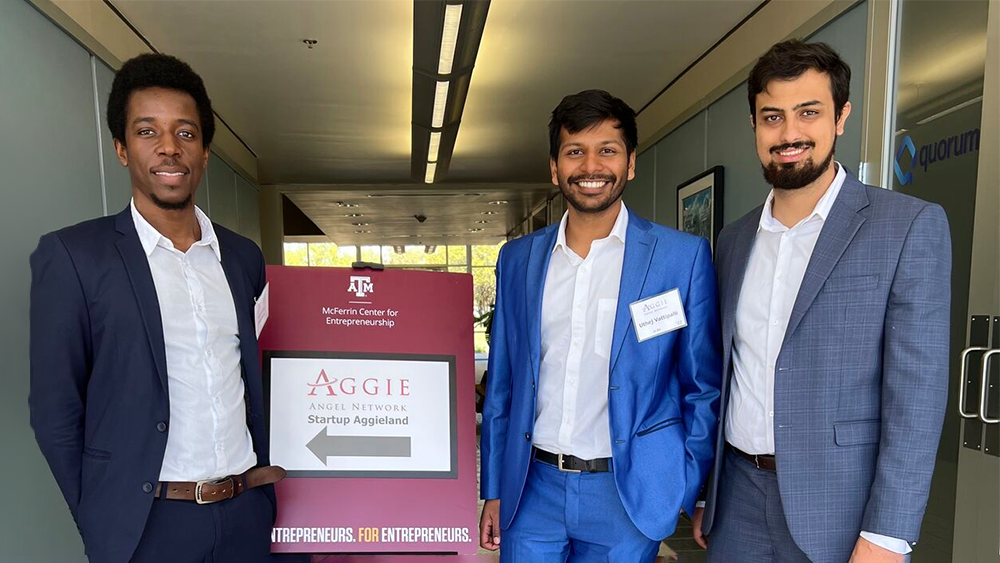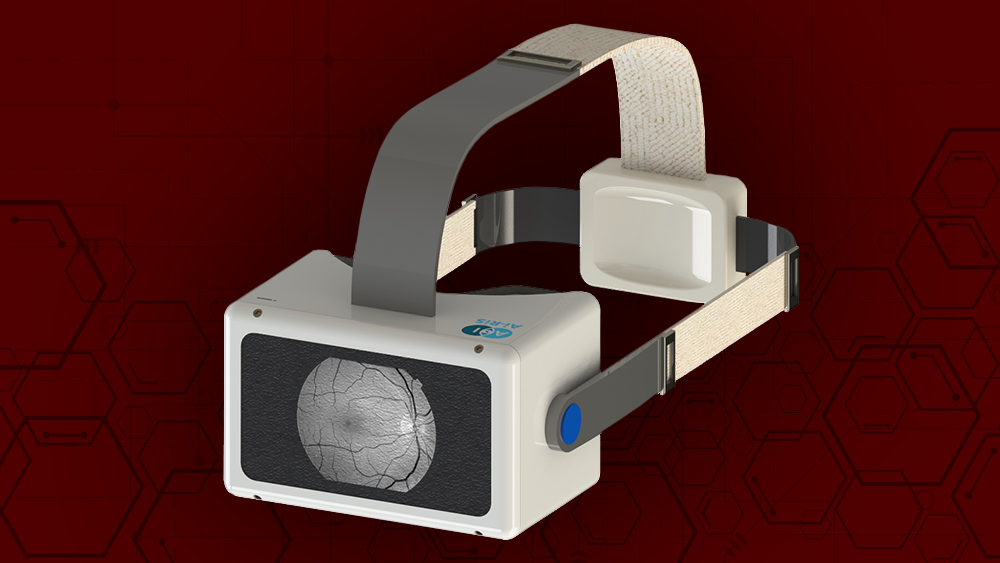
A team made up of a Texas A&M University professor and students in the College of Engineering teamed up to address vision loss due to diabetes by creating an ocular camera and artificial intelligence (AI)-powered imaging system to assist primary care physicians in diagnosing diabetic retinopathy.
The organization, Ai-Ris, was founded by biomedical engineering doctoral students Daniel Kermany and T.J. Falohun, civil engineering graduate student Uthej Vattipalli and biomedical engineering research assistant professor Dr. Amir Zavareh. The Ai-Ris journey officially began in 2017 with Kermany, when he started accumulating more skills and knowledge surrounding AI-based disease diagnoses.
Ai-Ris became a reality after winning a national competition presented by Sling Health, a student-run biotechnology incubator providing solutions, resources and mentorship to student teams tackling clinical problems.
“The team spun out from a medical entrepreneurship student organization called Sling Health in the fall of 2019,” Zavareh said. “We started as an interdisciplinary group of individuals with backgrounds in engineering, business and medicine. From there, Ai-Ris was officially incorporated in July 2020.”
Ai-Ris is utilizing a particular machine-learning algorithm to help physicians detect retinopathy with 99% accuracy and sensitivity. This AI system powers their retinal imaging device and assists primary care providers with accurately screening patients for diabetic retinopathy without a specialist present.
This clarifier can also detect signs of pathologies from five different conditions, including age-related macular degeneration, diabetic retinopathy, retinal vein occlusion, glaucoma and high myopia, a rare form of high-degree nearsightedness.

“Vision loss due to diabetes, known as diabetic retinopathy, is the leading cause of preventable blindness in the U.S. The condition affects up to 80% of adults who live with diabetes for longer than 15 years, which puts approximately 34 million American adults at immediate risk,” Zavareh said. “To prevent blindness, diabetic retinopathy must be caught early.”
The team presented a solution consisting of a portable ocular camera and a machine-learning algorithm. While the camera captures images of the patient’s retina without dilating the pupil, the algorithm classifies images of the patient’s retina through the identification of diabetic retinopathy indications, like microaneurysms, small dot hemorrhages and exudates.
Due to the lack of access to eye care in underserved communities, individuals living in rural areas often go undiagnosed and eventually suffer from vision loss and blindness. Currently, these individuals must visit ophthalmologists to conduct their eye exams. However, improvements on software and hardware technology that is currently available will eventually allow all individuals suffering from diabetes to get eye exams at their primary care provider’s office.
“While underserved patient populations in the United States provide the strongest use-case for our device, diabetics of all socioeconomic classes need to regularly check their vision to monitor early signs of diabetic retinopathy,” Zavareh said. “This will increase access to retinal exams by tenfold, and the impact of our technology will be revolutionary.”